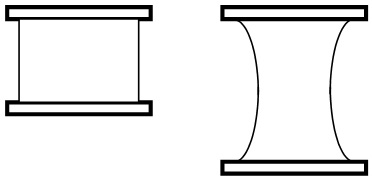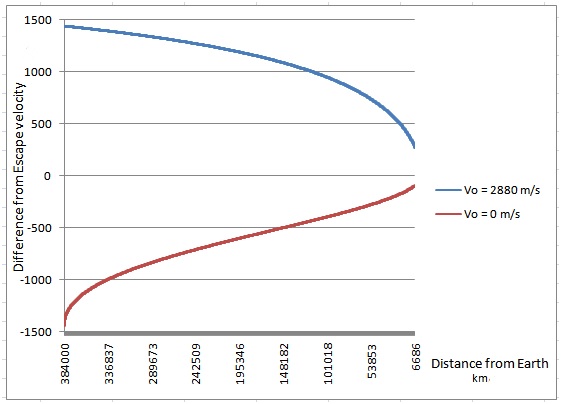
Consider two solid objects that are allowed to fall to Earth from a distance of the moon’s orbit. One object starts with an initial velocity of 0 m/s with respect to Earth’s surface and the second object has a downward initial velocity of 2880 m/s. At that altitude, the Escape Velocity (ve) is 1440 m/s. The chart below shows the difference from ve for the two objects as a function of the distance from Earth.

Notice that the speed difference from ve continually decreases for both objects as they fall. Why? If we are to accept that motion is absolute, then objects in motion thru space have absolute kinetic energy. As described in the section “aberration of light”, expanding space robs particles and light of energy. Here we see again objects losing kinetic energy in expanding space as they fall to Earth. The energy loss is directly proportional to the rate of expansion of space and to the time of exposure. The effect has to also be present at the atomic/molecular level. However, because the compression of space is dominant, we can expect a gain of molecular kinetic energy, expressed as a gain in temperature. This warming effect must also be present in our planet and on all celestial bodies; it is to be called ‘gravitational heating’. We can also safely state that it has been constant for billions of years and it is not a source of recent planetary warming. The heating effect is proportional to the mass and the density of the body. This effect directly challenges the principle of conservation of energy, because heat is being generated by the constant compression of space. Note that the principle of conservation of energy still holds in flat space (non-expanding or non-compressing space).
Since most matter is concentrated in areas of compressing space, and less so in areas of expanding space; the implication is that new energy is being created in the universe; and by extension, new mass; given the equivalence between energy and mass provided by relativity.